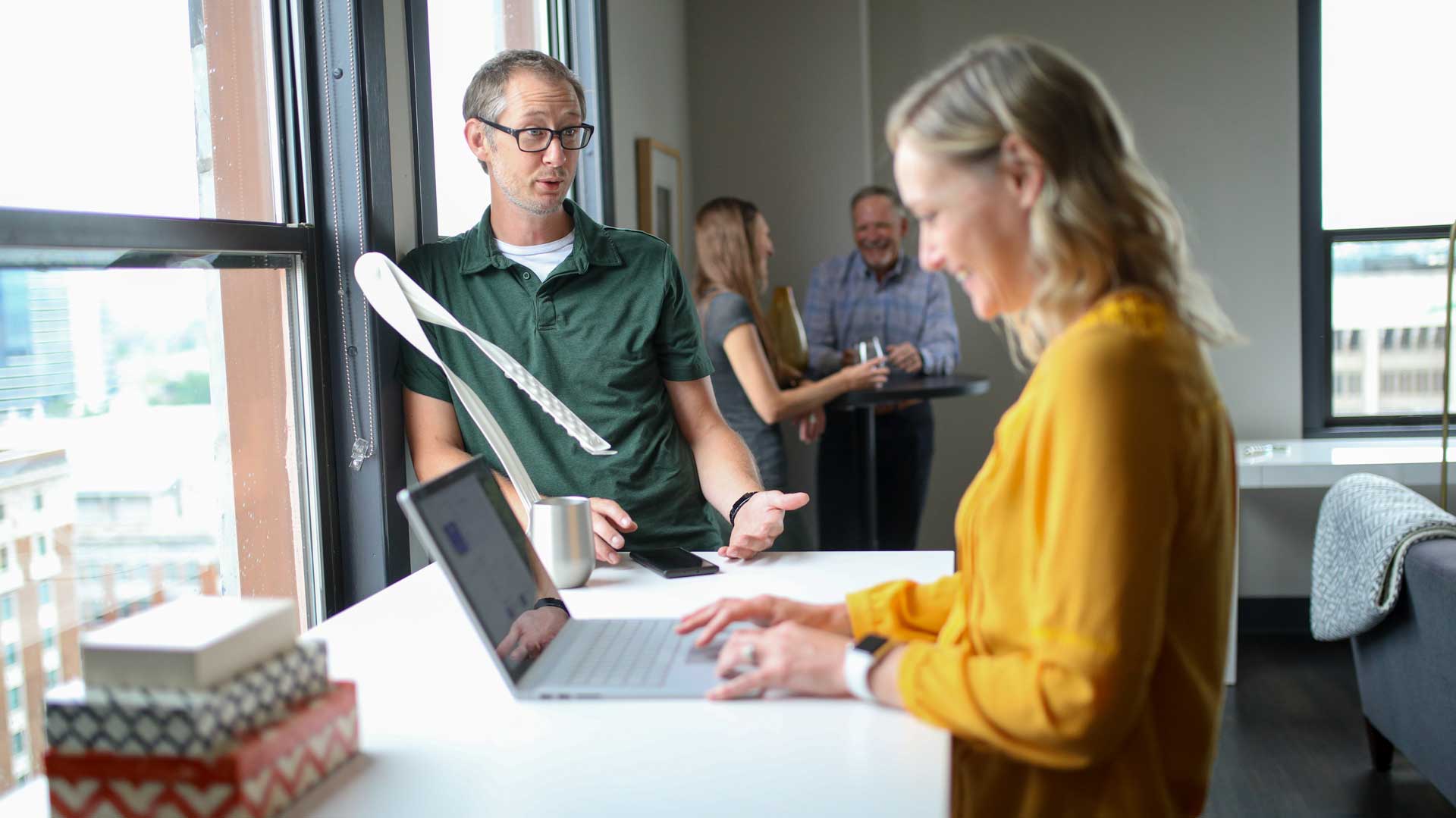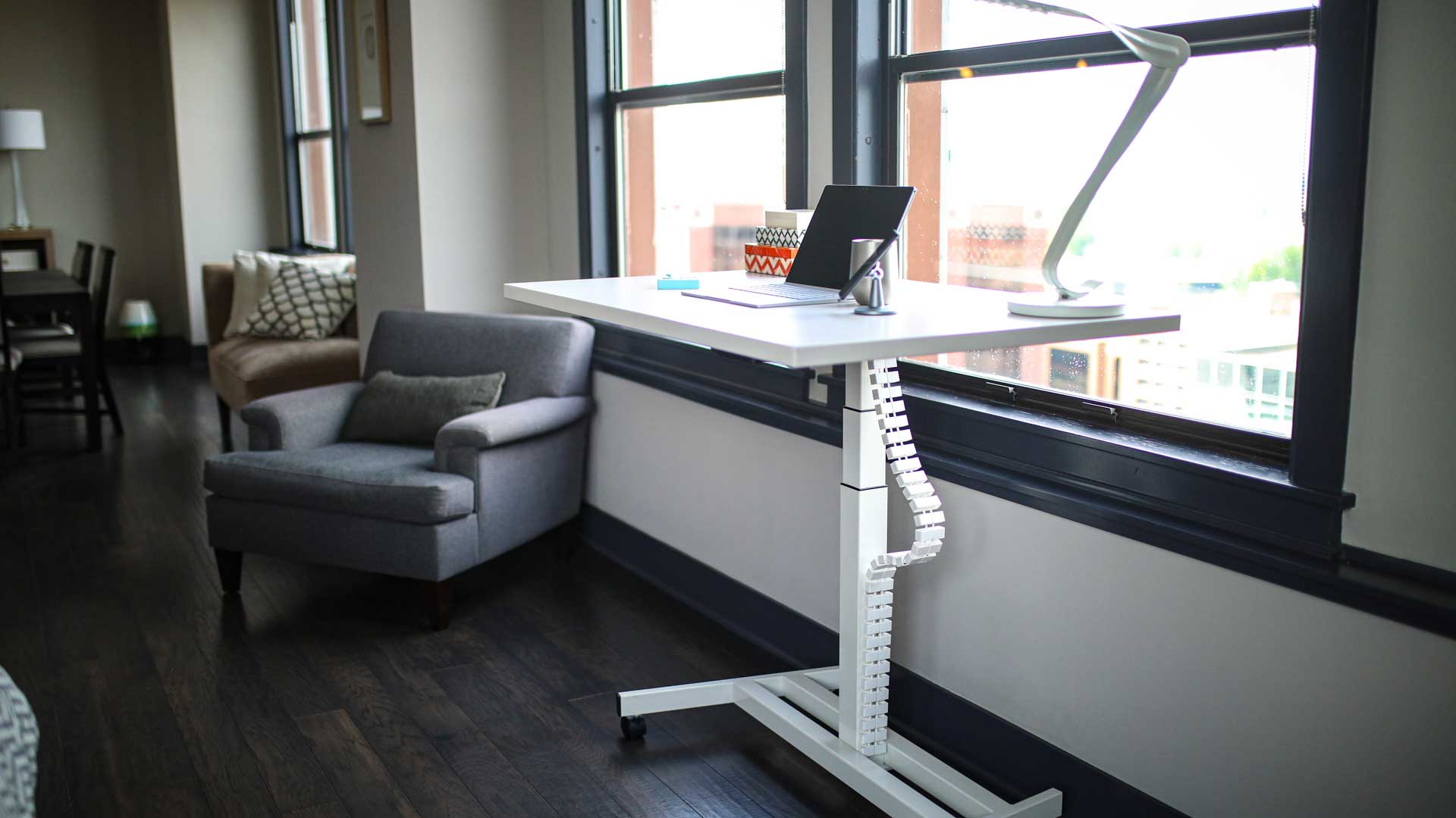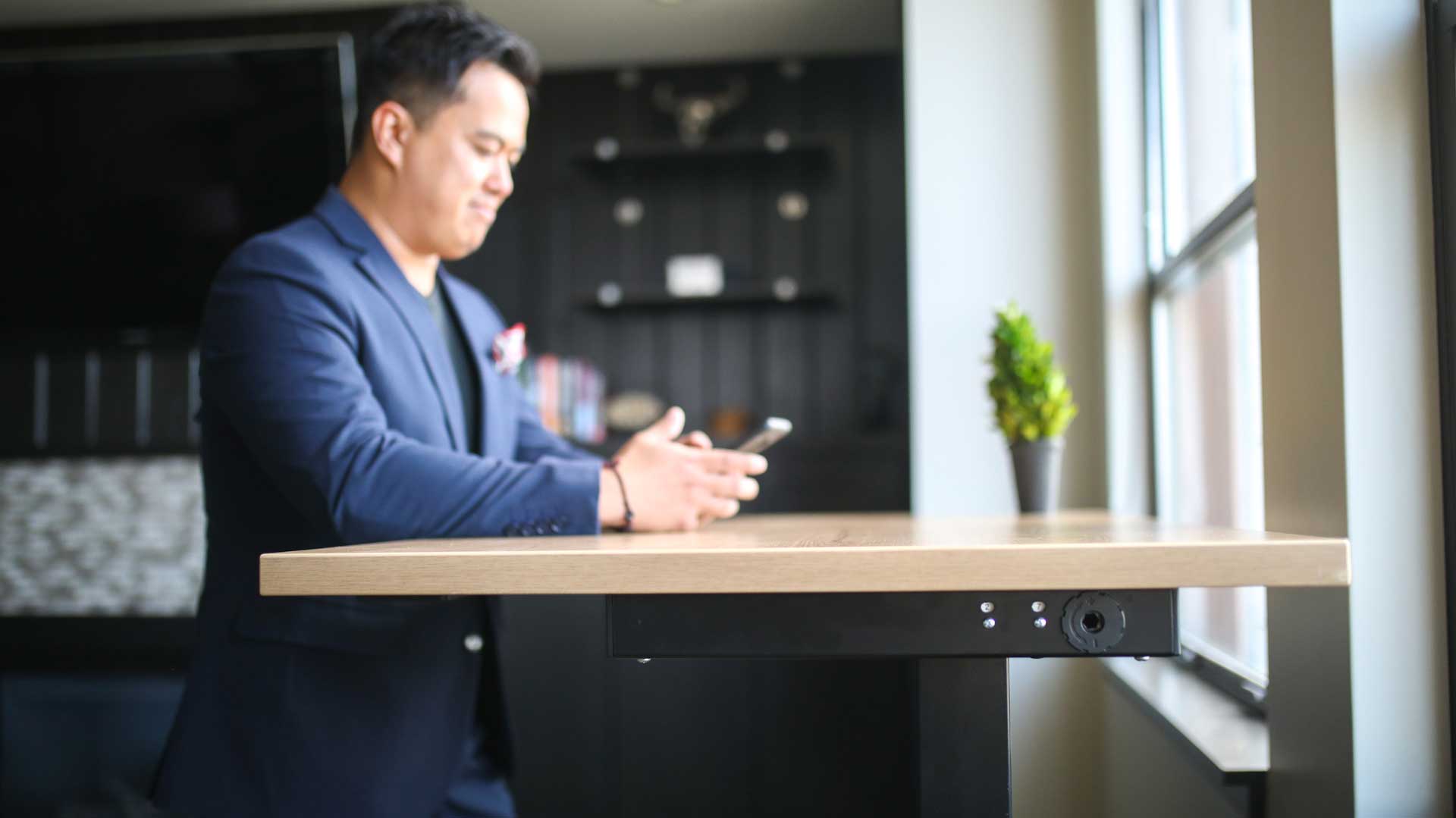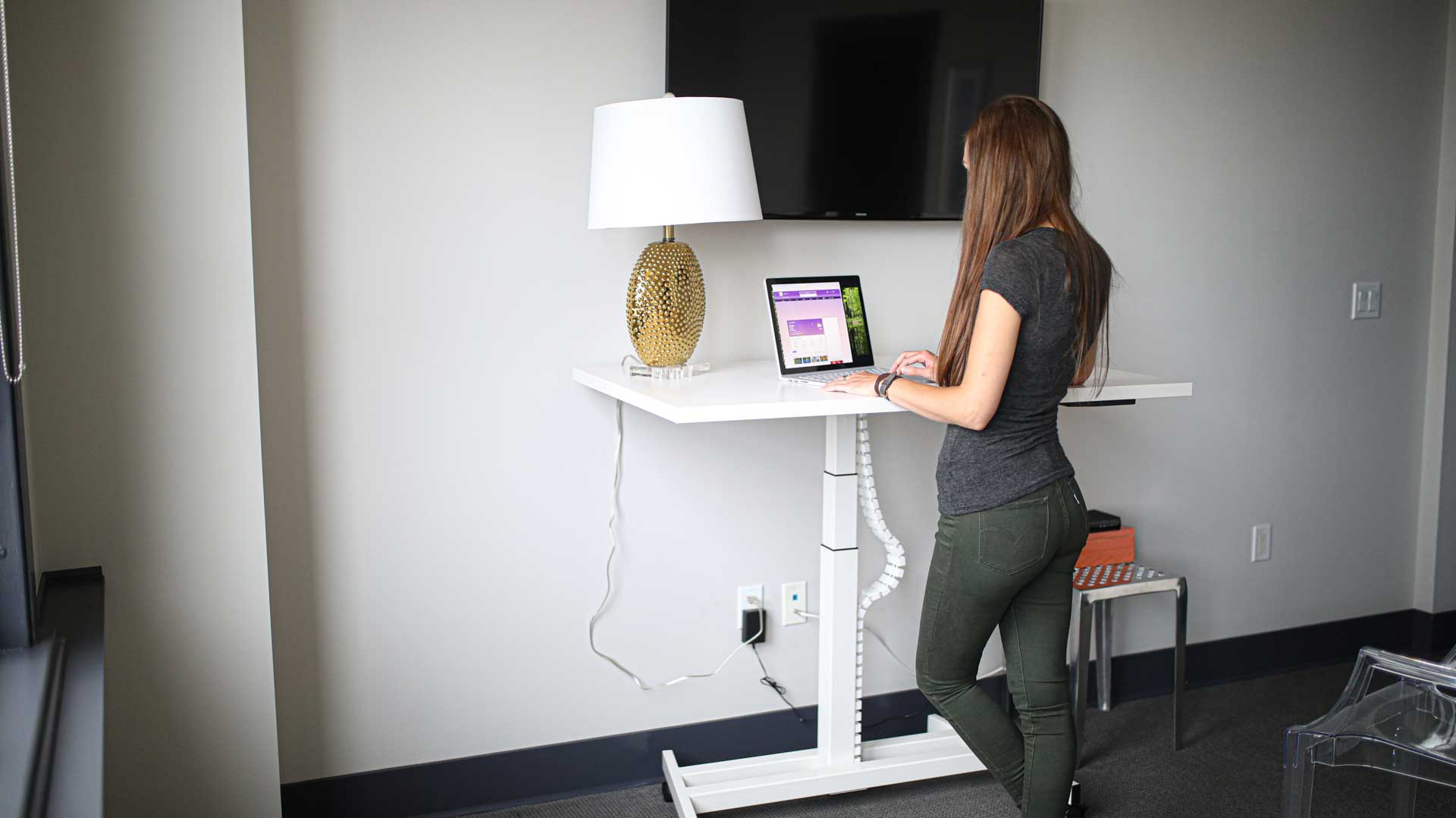After months of dealing with the unexpected,
businesses have been developing strategies to reopen offices, either gradually or all at once. Some changes are short term, but some work patterns and hygiene-related design changes are here for the long haul. One thing we know for certain is that the post-pandemic office will look different.
Many workers have been eager to get back to the workplace, both for collaboration and for health reasons. According to a WebMD poll, more than 50% of women and 25% of men reported weight gain related to COVID stay-at-home orders. Some found that they moved less at home than they did in the office, or the kitchen at home was too much of a temptation. Others missed their ergonomic work areas. One UK workplace strategy firm, WKspace, found that 84% of people still have not found a suitable home workspace. Nutrition, ergonomics, and movement are aspects of wellbeing that people find in their office environments.
We’ve realized the importance of our work routines to our physical wellbeing. Offices that fit some of the post-pandemic criteria can be better positioned to support employees as they return to the workplace.
Changes We See Already
Some offices have resumed operations with a staggered workforce to allow for social distancing, or with smaller groups working in the office on alternate days or odd shifts. Many large companies are leasing smaller distributed offices closer to employee homes to reduce the need for public transportation while addressing employee collaboration needs.
Returning workers have been welcomed back to a workplace that has been scrubbed clean and looks quite different. Desks have been moved further apart, chairs removed, and barriers created in the short term. Defined walking paths are designated with signs. “Sneeze guards” and moveable workstation partitions that were once used for privacy or acoustics are now recommended for physical separation. This physical distancing may remain even if a 6’ distance between workstations is not government-mandated, if people become accustomed to it and feel more comfortable and reassured.
Longer-Term Office Changes – When the Dust Settles
We’re still in tactical mode. Longer-term, the effects of the pandemic are likely to linger and change the workplace design in grand and subtle ways. We can expect to see changes in office layout, wellness, furniture, and remote worker accommodation.
Office Layout
In some cases, designers may be coming full circle on cubicles and walls vs open spaces. Once the cubicle farm was the de facto office design. More recently, an “anti-office” movement had evolved offices into open spaces meant to foster collaboration and creativity. Now, to entice remote working employees back, many offices have implemented private pods and screen guards to close off individual spaces again.
Wellness
Wellness has become a bigger factor for built environments, and it may be a while before workers trust public transportation and or their coworkers’ habits. We can expect to see more changes focused on health and wellness, including:
- sunnier and smaller buildings
- natural spaces that include terraces, operable windows, sky gardens, balconies, and sunlight
- HVAC with filtration, purifying the air similar to the way hospitals and dental clinics do
- sinks in more places, such as reception areas, similar to healthcare offices
- antimicrobial surfaces
To reduce the need to touch shared surfaces, office designers are incorporating lots of technology options. Motion sensors or keycards can turn on lights and faucets or open doors, including bathroom doors. Elevator doors can be operated by phone, or even by toe high elevator buttons. Any change that reduces high-touch surfaces increases the perception of a healthier environment for workers.
Furniture
With so much up in the air, flexible office furniture is key. Furniture solutions that are easy to move, sanitize, and reconfigure have the best chance of long term utility. An adjustable standing desk that is easy to reconfigure provides a sensible solution suited for a variety of future options. Movable furniture options help keeping employees safe, yet provide flexibility to change floor plans as needed.
A new emphasis on heavy cleaning will also be an ongoing trend. Upholstered materials that can withstand heavy cleaning are increasingly popular. Hard surfaces like plastic and metal can withstand the increased cleaning schedules. Designers are also incorporating wood and natural stone, which can be antimicrobial, to introduce natural elements that feel like a welcoming and calming environment.
Remote Worker Accommodation
Current predictions show offices may average about half their pre-pandemic occupancy. Companies like Dell, which had 30% of staff working remotely last year, estimate that in the end, 50% of their staff will continue to work remotely. Overall, the Society of Human Resource Managers reports that 68% of organizations will adopt even more flexible work from home policies.
To help address concerns about ergonomic issues in home offices, an increasing number of companies offer a work from home stipend as a perk. Companies like Shopify, Basecamp, and Twitter have given allowances for their newly remote employees’ home office setup. This stipend allows workers to choose a sit-stand desk that improves the ergonomics of their workspace. In some states, such as Illinois and California, these home office stipends are mandated, but in many cases, they are simply a perk to attract employees and improve their overall wellness.
With more opportunities to work from home, there will still be a need to check in to a physical office for work activities like meetings and employee development. Rather than having personal desks, some designers are looking towards “touchdown spaces” for one or two people per room to allow occasional work from the office. Some offices may offer a locker for each employee and a hoteling concept, where workstations are shared, yet easy to clean at the end of the day. To enable this office sharing concept, many workplaces might find it necessary to coordinate space more precisely with an office manager position or scheduling software.
Workspaces in the post coronavirus workplace will revolve around desks and chairs. These spaces will be designed for flexibility and movability, with a plan to separate rather than congregate. Height-adjustable tables provide that flexibility. Add casters to create spaces that can be reconfigured on the fly to adjust the space to fit multiple layouts.
No one has a crystal ball to show what the future of the workplace will be, but businesses are preparing for that future now. Even when a vaccine becomes available, lasting impacts can be expected in the office environment, with a focus on employee health and safety. To prepare for this uncertain future, a new level of flexibility is key. One certainty is that flexible workplace solutions that support healthy work environments are here to stay.











